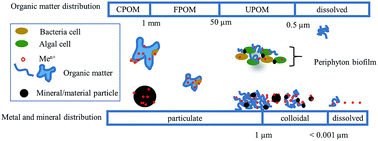Controls on metal exposure to aquatic organisms in urban streams
Abstract
Streams in urban ecosystems receive metal inputs primarily from stormwater runoff and wastewater effluent. The relative contribution of these metal sources to stream impairment is difficult to discern based on simple water characteristics and biological surveys. Stream impairment in these systems is often indicated by reduced abundance and diversity of aquatic insects, which tend to be more sensitive to chronic metal exposures. Metal species and controls on metal species in both the waterborne and dietborne exposure pathways to aquatic organisms are reviewed here. In addition, ecological changes that can control dietborne species are discussed. A main focus is on how organic matter from different anthropogenic sources may control both aqueous metal speciation as well as interaction with various inorganic or microbiological surfaces in streams. Most of the reviewed research focuses on Cu, Zn or Pb as those are the primary metals of concern in developed systems and Cu and Pb have unique and strong interactions with organic matter. Recommendations for further research are described in the context of exposure species, dynamics of exposure, stoichiometry, or advanced analytical tools, and regulatory implications are discussed.

- This article is part of the themed collection: Emerging Investigators 2016

 Please wait while we load your content...
Please wait while we load your content...